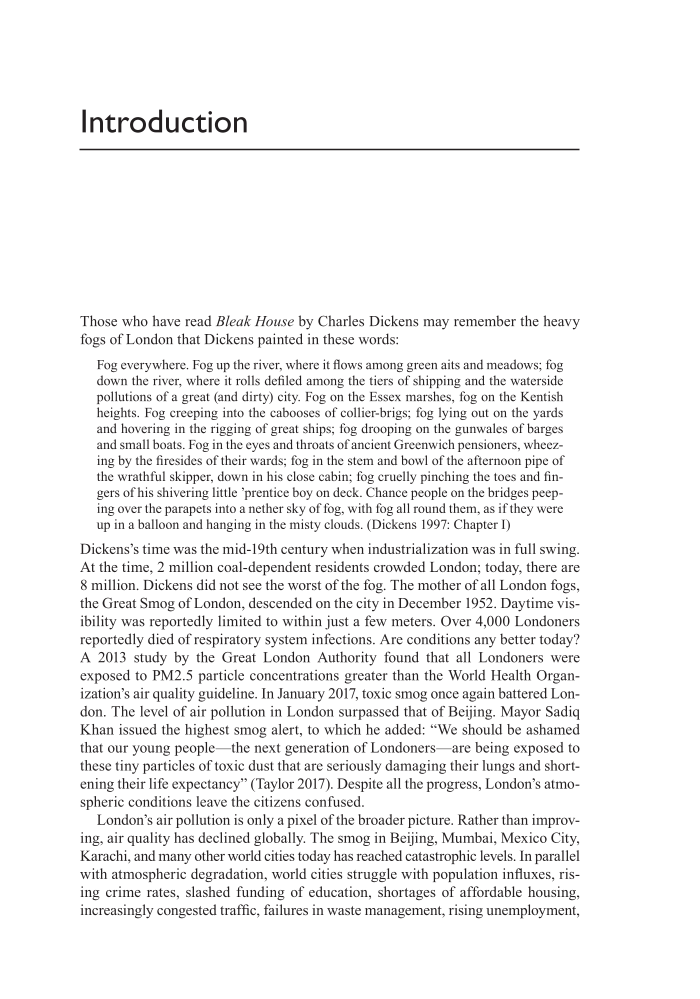Introduction Those who have read Bleak House by Charles Dickens may remember the heavy fogs of London that Dickens painted in these words: Fog everywhere. Fog up the river, where it flows among green aits and meadows fog down the river, where it rolls defiled among the tiers of shipping and the waterside pollutions of a great (and dirty) city. Fog on the Essex marshes, fog on the Kentish heights. Fog creeping into the cabooses of collier-brigs fog lying out on the yards and hovering in the rigging of great ships fog drooping on the gunwales of barges and small boats. Fog in the eyes and throats of ancient Greenwich pensioners, wheez- ing by the firesides of their wards fog in the stem and bowl of the after noon pipe of the wrathful skipper, down in his close cabin fog cruelly pinching the toes and fin gers of his shivering little ’prentice boy on deck. Chance people on the bridges peep- ing over the parapets into a nether sky of fog, with fog all round them, as if they were up in a balloon and hanging in the misty clouds. (Dickens 1997: Chapter I) Dickens’s time was the mid-19th century when industrialization was in full swing. At the time, 2 million coal-dependent residents crowded London today, there are 8 million. Dickens did not see the worst of the fog. The mother of all London fogs, the Great Smog of London, descended on the city in December 1952. Daytime vis- ibility was reportedly limited to within just a few meters. Over 4,000 Londoners reportedly died of respiratory system infections. Are conditions any better today? A 2013 study by the Great London Authority found that all Londoners were exposed to PM2.5 particle concentrations greater than the World Health Organ ization’s air quality guideline. In January 2017, toxic smog once again battered Lon- don. The level of air pollution in London surpassed that of Beijing. Mayor Sadiq Khan issued the highest smog alert, to which he added: “We should be ashamed that our young people— the next generation of Londoners— are being exposed to these tiny particles of toxic dust that are seriously damaging their lungs and short- ening their life expectancy” (Taylor 2017). Despite all the pro gress, London’s atmo- spheric conditions leave the citizens confused. London’s air pollution is only a pixel of the broader picture. Rather than improv- ing, air quality has declined globally. The smog in Beijing, Mumbai, Mexico City, Karachi, and many other world cities today has reached catastrophic levels. In parallel with atmospheric degradation, world cities strug gle with population influxes, ris- ing crime rates, slashed funding of education, shortages of affordable housing, increasingly congested traffic, failures in waste management, rising unemployment,
Document Details My Account Print multiple pages
Print
You have printed 0 times in the last 24 hours.
Your print count will reset on at .
You may print 0 more time(s) before then.
You may print a maximum of 0 pages at a time.



















































































































































































































































































































































































































































































































































































































































































